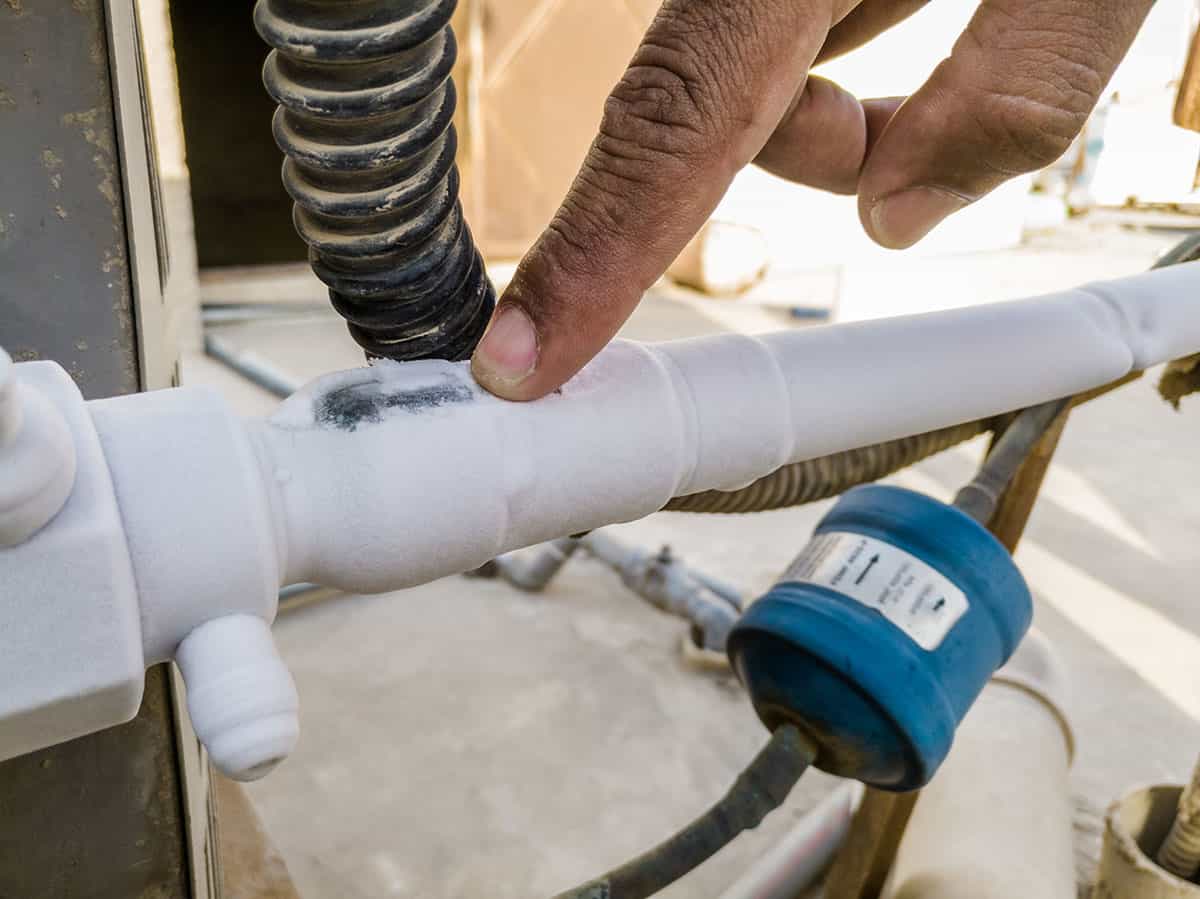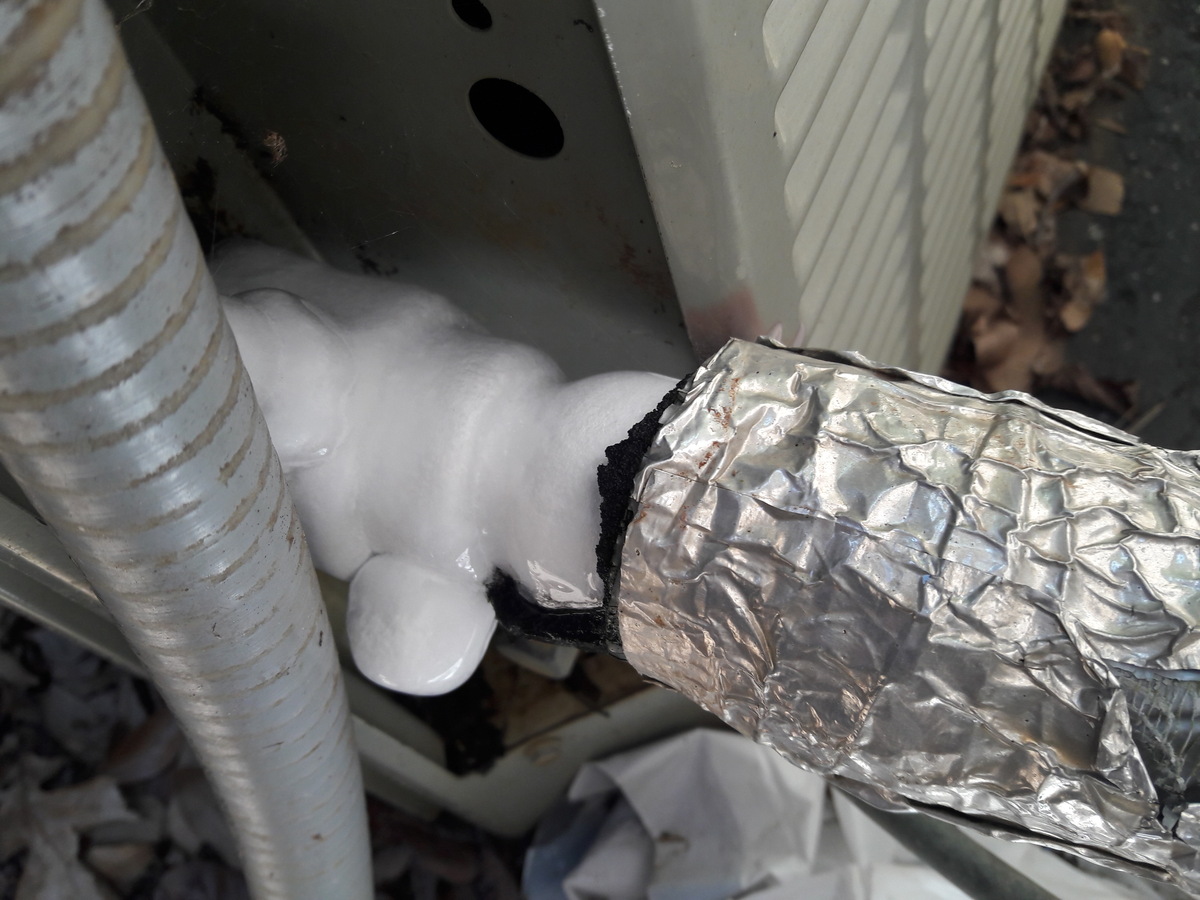The Air Conditioner Pipe Is Frozen - What Should I Do? Guidance for Homeowners
The Air Conditioner Pipe Is Frozen - What Should I Do? Guidance for Homeowners
Blog Article
This post following next in relation to What Do I Do If My AC Pipe Is Frozen is exceedingly remarkable. You should check this stuff out.

Introduction
Discovering that your AC pipeline is frozen can be concerning, specifically throughout hot summertime when you depend on your air conditioner one of the most. Recognizing what to do in such a circumstance is vital to avoid further damages to your cooling system and guarantee your convenience inside your home.
Understanding the Causes
A number of variables can add to the freezing of an AC pipeline. Comprehending these reasons can help you deal with the issue successfully.
Lack of Airflow
One common reason for an icy air conditioner pipe is inadequate airflow. When the air flow over the evaporator coil is limited, it can cause the coil to drop below freezing temperature level, resulting in ice formation on the pipeline.
Reduced Refrigerant Levels
Insufficient cooling agent degrees in your a/c system can additionally result in a frozen pipe. Reduced cooling agent levels can cause the pressure in the system to drop, causing the cold of dampness on the evaporator coil.
Winter Conditions
In chillier environments, freezing temperature levels outside can add to the freezing of AC pipelines. If your air conditioning unit is not effectively protected or if there are leaks in the ductwork, chilly air can infiltrate the system, triggering the pipeline to freeze.
Dirty Air Filters
Unclean or blocked air filters can limit airflow in your a/c system, causing different concerns, including a frozen pipeline. It's vital to replace or clean your air filters regularly to guarantee appropriate air flow and stop ice accumulation.
Indicators of a Frozen A/c Pipe
Acknowledging the signs of an icy a/c pipeline is crucial for punctual action.
Lowered Airflow
If you observe a substantial reduction in air flow from your vents, it could show an icy pipeline.
Ice Buildup on the Pipe
Noticeable ice build-up on the cooling agent line or the evaporator coil is a clear indicator of an icy air conditioner pipe.
Weird Sounds from the Unit
Unusual audios, such as hissing or bubbling, originating from your a/c device can indicate that there's ice existing on the pipe.
Immediate Actions to Take
When faced with an icy air conditioning pipeline, it's essential to act rapidly to stop more damage to your cooling system.
Shutting off the air conditioner
The first step is to shut off your air conditioning unit to avoid the system from running and worsening the problem.
Checking for Blockages
Examine the area around the indoor unit for any blockages that might be blocking air flow, such as furnishings or curtains.
Thawing the Pipe
You can make use of mild approaches like putting towels soaked in cozy water around the frozen pipe to aid thaw it slowly.
Safety nets
Taking preventive measures can aid prevent future incidents of an icy air conditioner pipeline.
When DIY Methods Fail
If your efforts to thaw the pipeline or address other problems are not successful, it's time to contact an expert.
Significance of Hiring a Professional HVAC Technician
A certified HVAC technician has the proficiency and devices essential to diagnose and repair concerns with your AC system safely and efficiently.
Normal Maintenance Checks
Set up normal upkeep checks with a professional HVAC specialist to guarantee that your air conditioning system is running effectively.
Changing Air Filters
Routinely replace or cleanse your air filters to stop air flow restrictions and maintain optimum performance.
Insulating Exposed Pipes
If your air conditioner pipes are exposed to cool temperature levels, consider shielding them to prevent cold during winter season.
Seeking Professional Help
If DIY methods fall short to fix the issue or if you're not sure concerning how to continue, it's ideal to seek aid from a qualified HVAC specialist.
Final thought
Managing an icy air conditioner pipe can be an aggravating experience, however recognizing just how to react can aid minimize damage and bring back comfort to your home. By understanding the causes, recognizing the signs, and taking prompt action, you can effectively address the issue and protect against future events.
Frozen AC Line: Why It Happens & What To Do About It
A frozen AC line can be a rather peculiar sight in a place like Phoenix, Arizona where nothing ever freezes. In this post, we’ll discuss what makes an air conditioner line frozen – and what you can do about it.
Dirty Air Filters
Did you know that you should be cleaning or replacing your air filters on a monthly basis? Failing to do this can result in airflow issues that, in turn, cause your evaporator coils and lines to freeze over. You’ll notice a buildup of ice on both components, although the buildup on your pipes will, of course, be more evident unless you open your air condition up to reveal the coils.
What To Do About It
Give your air filter a good cleaning if it’s reusable. If not, replace the filter outright. Next, switch your air conditioner’s fan setting on and leave it there for 2-3 hours. This will draw warm air in, helping to thaw your evaporator coil. You can also check out this article for some tips on cleaning the coils themselves if you’d like to speed the process up. Before you switch the unit back to its normal state, make sure the supply vents are completely unobstructed and free of dust or other debris.
If you keep having this issue even after replacing your filters regularly, contact a local HVAC repair company and have them inspect your evaporator coil, ductwork, and any other components that may be at fault. If you live in the Phoenix, Arizona area, give American Home Water and Air a call.
Low Refrigerant Levels/Leakage
What To Do About It
Contrary to what air conditioner “recharge” companies often tell their clients about refrigerant, it should never need to be simply refilled. You see, refrigerant runs in what experts refer to as a “closed loop.” Refrigerant really shouldn’t be leaving that loop. If it is, you’ve got a leak.
Paying someone to come and pump more refrigerant into your system (aka “recharge” it) isn’t the solution. Doing that will simply kick the can down the road. Besides, refrigerant leaks can be harmful to the environment and people in your home.
Rather, you need to take care of the leak with the help of a technician. Check out this article for some more information about dealing with air conditioners that are leaking refrigerant. Before you contact a technician, switch your thermostat to the off position. Then, switch the fan setting on and let it run for 2-3 hours so the unit can thaw.
Improper Temperature Setting
Improper temperature settings can also cause a drop in your air conditioner’s pressure. What many people don’t realize is that air conditioners are actually designed to run when temperatures have fallen above roughly 60 degrees Fahrenheit. If you run the unit when it’s cold outside, you’ll run into many issues, including frozen components.

I hope you enjoyed reading our part about Why Is Ice On My Outside Air Conditione. Many thanks for finding the time to read through our content. So long as you appreciated our blog posting please do not forget to share it. I praise you for your time. Don't hesitate to come by our site back soon.
Click Here Report this page